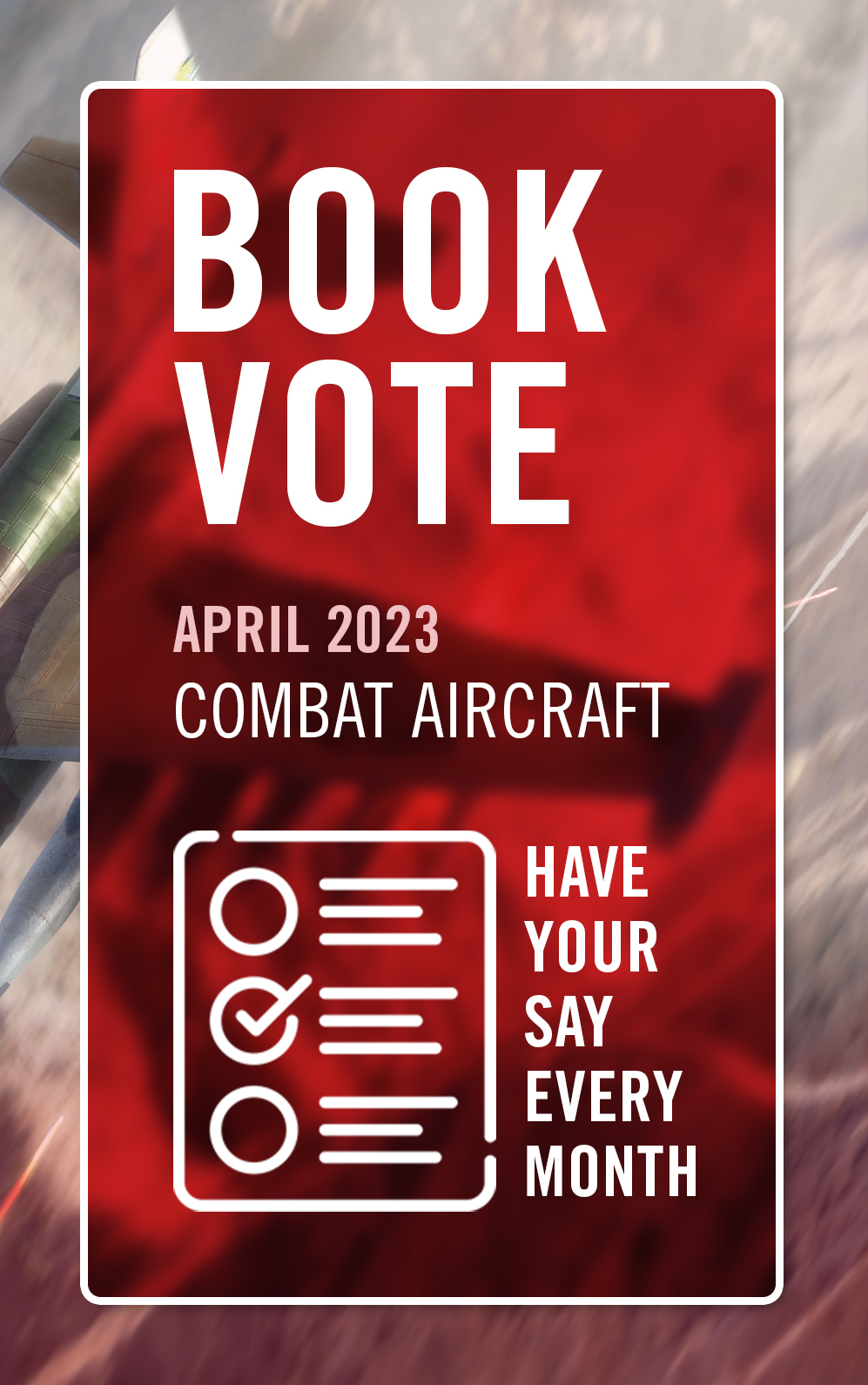
This month's book vote sees five Combat Aircraft titles battling for your support. Read the full descriptions and have your say by filling out the form on the Book Vote page. Plus, check out the results of last month's New Vanguard Vote.
RAF Jaguar Units in Combat
B-52 Stratofortress Units in Combat 1992–2023
North American A-36 Units in Combat
Swordfish Units of World War 2
Aichi 99 Kanbaku ‘Val’ Units 1942–45
RAF Jaguar Units in Combat
The mainstay of the Royal Air Force (RAF) strike/attack force during the later years of the Cold War, the Sepecat Jaguar also served with the RAF’s rapid deployment force and was among the first aircraft to be deployed to the Persian Gulf in 1990, Northern Iraq in 1991 and the Balkans in 1993. Jaguars flew operational missions almost continuously between 1990 and 2003, and saw combat during the second Gulf War (1991) and in Bosnia-Herzogovina (1993–95), as well as undertaking reconnaissance missions over northern Iraq (1991–2003) and the Balkans (1993–98).
B-52 Stratofortress Units in Combat 1992–2023
This volume book will examine the ongoing career of the veteran B-52H, which had remained very much in frontline service with the USAF following its exploits in Operation Desert Storm in 1991. Since then, the heavy bomber has participated in numerous campaigns in Afghanistan, Europe and the Middle East. More than 70 years after its first flight, the B-52 is still an essential component in the USAF’s bomber force, and thanks to engine, avionics and weapons updgrades, it will outlive younger contenders such as the B-1B Lancer and B-2A Spirit.
North American A-36 Units in Combat
In early 1942, the USAAF found itself without a high-performance, precision tactical attack aircraft suitable for the anticipated assaults on Axis held territories in the west. A solution to this problem was found in the rapid conversion of the Mustang I fighter into a dive-bomber, and the resulting aircraft, dubbed both the ‘Apache’ and ‘Invader’, served with distinction undertaking precision attack, long-range fighter escort and reconnaissance missions in the Mediterranean and China-Burma-India theatres.
Swordfish Units of World War 2
During the 1930s, the Fleet Air Arm sought an aircraft to combine the functions of torpedo attack, reconnaissance and gunnery spotting, and through a lengthy development, Fairey developed the Swordfish biplane. Despite effectively being obsolete at the start of World War 2, the Swordfish soldiered on when its intended replacements were either delayed or failed to supplant it in the torpedo-bomber role. The Swordfish made a crucial contribution to some of the Royal Navy’s greatest successes during World War 2, helping to tilt the balance of naval power against Germany and Italy in the early war years.
Aichi 99 Kanbaku ‘Val’ Units 1942–45
A follow-on to the successful COM 63, this book examines the ‘Val’ dive-bomber’s operations in the Solomon Islands and New Guinea during the latter half of 1942, by which point the aircraft had switched from carriers to land bases. Confronted by growing numbers of advanced Allied fighters, it found itself increasingly outclassed. By the time it was finally replaced by D4Y ‘Judy’ as the main Japanese dive-bomber, its losses in combat had become catastrophic. Thereafter, it continued to operate in small numbers, eventually joining other aircraft types in kamikaze sorties during the final months of the war.
Last month, we asked what you would like to see published in our New Vanguard series. Thank you to everyone who voted and provided feedback. The results saw one book take a narrow victory. Check out the full results below to find out more!
Tanks in the Caucasus 1942–43 (21.8%)
NATO SAMs at the Iron Curtain 1960–91 (16.6%)
Warships in the Red Sea 1940–41 (20.1%)
Flower-Class Corvettes of World War II (19%)
Early Steam Warships 1815–60 (22.5%)

Comments
You must be logged in to comment on this post. Click here to log in.
Submit your comment